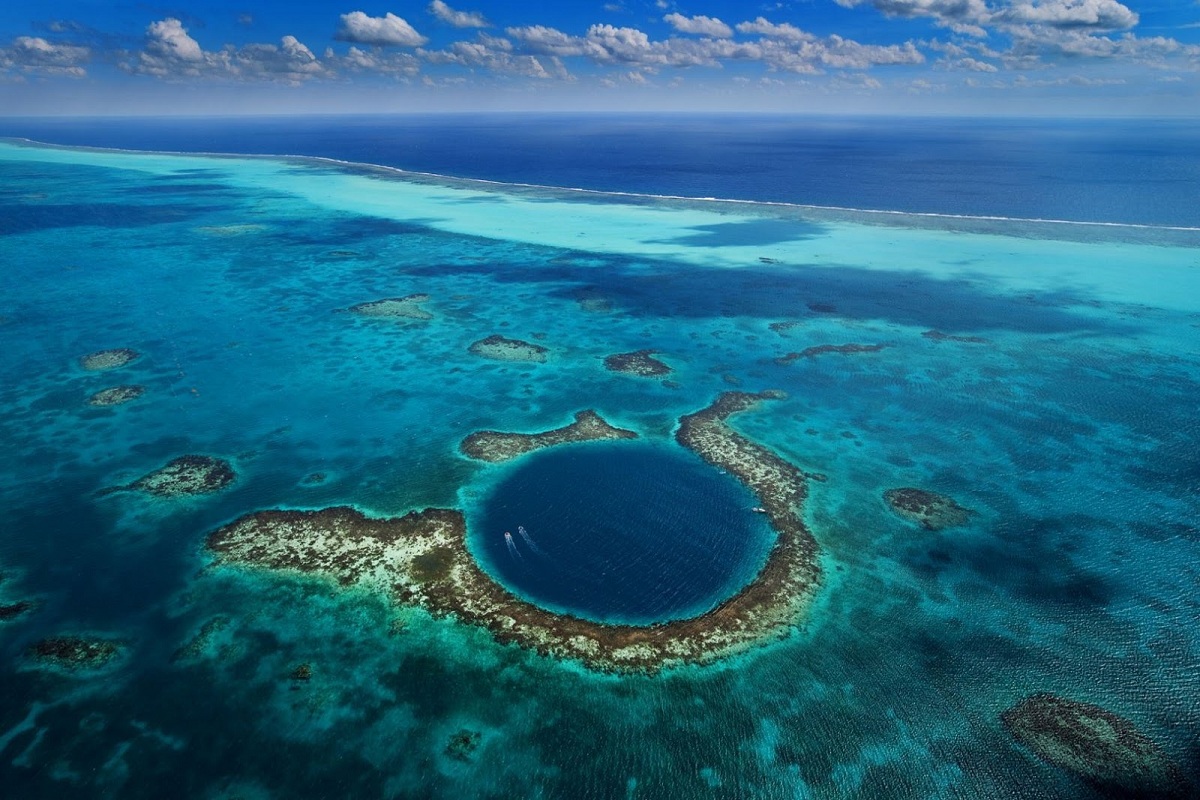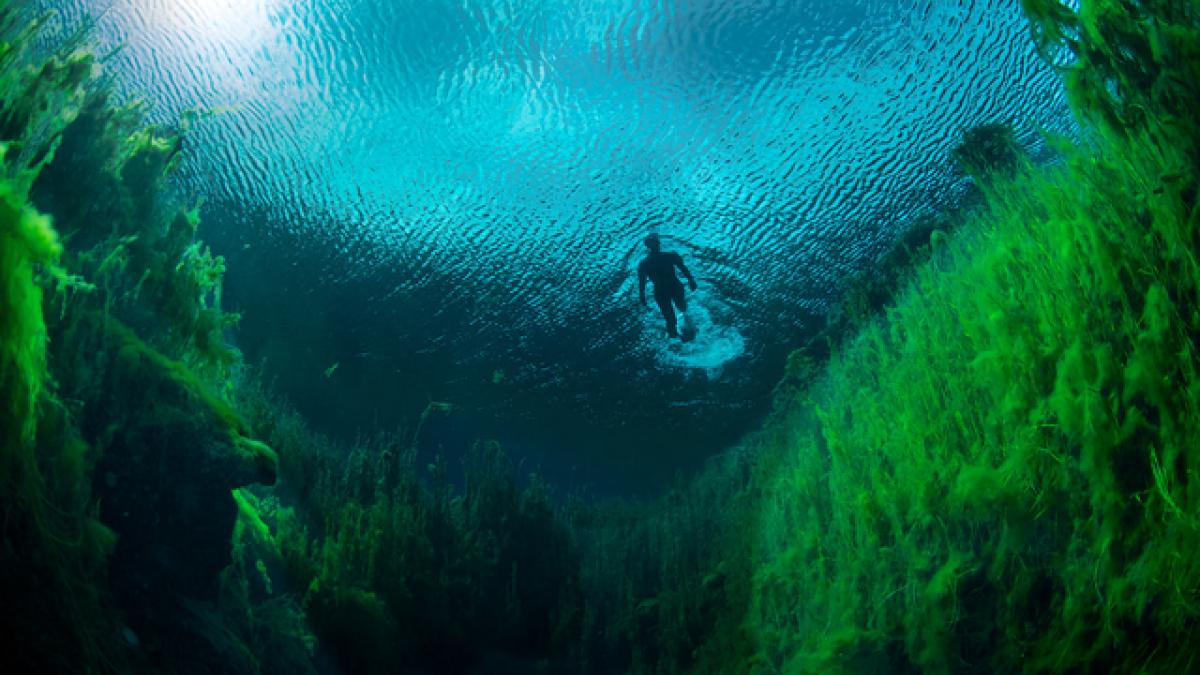
It has always been said that the ocean floor is a mystery to humans given the great depth and difficulty of studying it. The ocean trenches they are abysses on the seabed. Its formation is the result of the activity of the tectonic plates that when one of them converges is pushed under the other. In this way, what is known as a long and narrow V-shaped depression is formed that reaches the depths of the ocean. Some of the largest ocean trenches reach depths of around 10 kilometers below sea level.
In this article we are going to tell you everything you need to know about ocean trenches and their main characteristics.
Key features

The deepest oceanic trench is the Mariana Trench located near the Marine Islands with a length of more than 2,542 kilometers. The vast majority of these graves are located in the Pacific Ocean specifically in the area called Ring of Fire. In this pit is the Challenger Abyss that has a depth of 10.911 meters at the deepest part. It is considered as the maximum depth that the ocean reaches. It means that if we compare the Mariana Trench with Mount Everest, it is 2.000 meters deep.
Among the main characteristics that all ocean trenches have, we find high pressure and a lack of sunlight. In almost all trenches there is a large amount of pressure exerted by water at depth. It must also be taken into account that the sunlight does not reach here and, therefore, temperatures also drop a great deal. It is these characteristics that make the trenches have become one of the most unique habitats on the entire planet.
Formation of ocean trenches

Tectonic plates are the cause of the formation of ocean trenches. They are formed mainly by subduction. Subduction is a geophysical process in which two or more tectonic plates converge on each other. Normally, the oldest and densest tectonic plate is the one that is pushed underneath the lightest plate. This plate movement causes the ocean floor of the outer crust to curve into a slope. Usually this depression that forms is shaped like a V. This is how ocean trenches are formed.
We are going to go deeper knowing what the subduction zones are.
Subduction zone
When it is on the edge of a dense tectonic plate with another less dense edge, the plate with higher density bends downward. The place where the densest plate that is subducted is what is known as a subduction zone. This process makes things geological and dynamic elements. Many of these ocean trenches are responsible for numerous earthquakes at sea. And it is that in the subduction one plate on the other generates a quite strong friction force. They are usually the epicenter of large earthquakes and some of the deepest earthquakes on record.
These things can also form with a subduction zone that encompasses a continental crust and an oceanic crust. It is known that the continental crust always floats more than the oceanic one, so the latter will always subduct. The best known oceanic things are the result of this boundary between converging plates. It is a rare time that an ocean trench forms when two continental plates converge.
Importance of ocean trenches
Human beings have always declared that ocean trenches are of great importance. The knowledge about its interior is very limited of great depth life. Also to the remote location of its existence. However, scientists know the fundamental role they play in our lives. Much of the physical activities take place in the subduction zones. This can have a devastating effect on coastal communities and the global economy. There is more to see than the earthquakes produced on the sea floor in the subduction zone They were responsible for the tsunami in Japan in 2011.
Scientists study the features and life in ocean trenches to better understand our planet. And it is that there are numerous ways of adaptation of different organisms to the depths of the sea. Many of the adaptations can be extrapolated in order to get technological and biological advances to have improvements in medicine. Thanks to numerous scientific studies, it is possible to better understand the shape of organisms and adapt to the harsh life of these environments. Knowing this form of adaptation can help to understand other areas of research from diabetes treatments up to detergent improvement.
Another of the investigations that has been had about the oceanic trenches is the discovery of microbes. This microbe has its habitat in hydrothermal vents in the deep sea. Thanks to the existence of these microbes, it has been discovered that they have potential as new forms of antibiotics and drugs to prevent cancer. All these discoveries and investigations are what make the ocean trenches of great importance.
It can also take us to know the key to understanding the origin of life in the ocean. The genetics of organisms serves to be able to know the history of how life expanded from ecosystems as isolated as these things to the land through the ocean. Some more recent discoveries indicate that large amounts of accumulated carbon matter have been discovered in the pits. This means that all these regions can play a significant role in the climate of planet Earth.
Flora and fauna

Since these places are the most hostile habitats on earth, life is rare. Exists pressure 1000 times greater than that of the surface and a temperature slightly above freezing. The sun does not penetrate into ocean trenches, making photosynthesis impossible. The organisms that live here have been able to evolve with exceptional adaptations to be able to live in these cold and dark canyons.
Without photosynthesis, all these communities have marine snow as their main food. It is the fall of organic material from the heights in the water column. It mainly consists of waste such as excrement and remains of dead organisms such as fish and seaweed. Another source of nutrients does not come from photosynthesis but chemosynthesis. It is the process in which organisms such as bacteria convert chemical compounds into organic nutrients.
I hope that with this information you can learn more about ocean trenches and their importance.